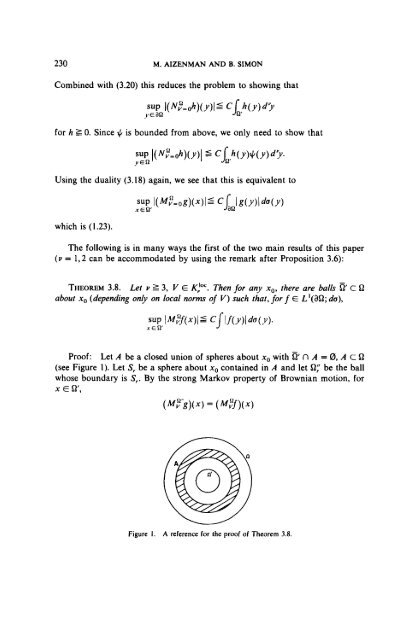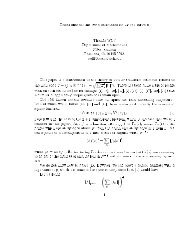Brownian motion and harnack inequality for ... - Math.caltech.edu
Brownian motion and harnack inequality for ... - Math.caltech.edu
Brownian motion and harnack inequality for ... - Math.caltech.edu
You also want an ePaper? Increase the reach of your titles
YUMPU automatically turns print PDFs into web optimized ePapers that Google loves.
230 M. AIZENMAN AND 8. SIMON<br />
Combined with (3.20) this r<strong>edu</strong>ces the problem to showing that<br />
<strong>for</strong> h L 0. Since 4 is bounded from above, we only need to show that<br />
Using the duality (3.18) again, we see that this is equivalent to<br />
which is (1.23).<br />
XEW<br />
The following is in many ways the first of the two main results of this paper<br />
(v = 1,2 can be accommodated by using the remark after Proposition 3.6):<br />
THEOREM 3.8. Let v 2 3, V E K,‘”. Then <strong>for</strong> any xo, there are balls C Q<br />
about xo (depending onb on local norms of V) such that, <strong>for</strong> f E L’(aQ; du),<br />
Proof: Let A be a closed union of spheres about xo with @ n A = 0, A C Q<br />
(see Figure 1). Let S, be a sphere about xo contained in A <strong>and</strong> let Qr be the ball<br />
whose boundary is S,. By the strong Markov property of <strong>Brownian</strong> <strong>motion</strong>, <strong>for</strong><br />
x E Q’,<br />
(Mb’i)(x) = (M3)P)<br />
Figure I. A reference <strong>for</strong> the proof of Theorem 3.8.




